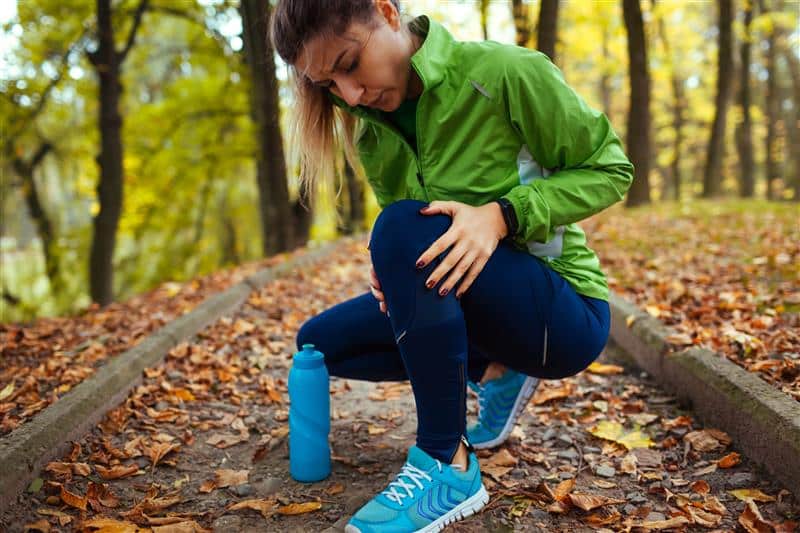If you’re living in Flagstaff and have been dealing with pain or swelling right at the front of your knee, you might be experiencing kneecap bursitis. It’s a common but often misunderstood condition that can really slow you down, especially if you love staying active in Northern Arizona’s beautiful outdoors. This guide from Northern Arizona Orthopedics will walk you through the symptoms, treatments, and what to expect during recovery.

What Is Knee Cap Bursitis?
Your knee has small, fluid-filled sacs called bursae (pronounced BUR-see) that act like cushions between bones and soft tissues. When the bursa in front of your kneecap, known as the prepatellar bursa, becomes inflamed, that’s kneecap bursitis.
Think of it like a tiny water balloon getting irritated and swollen from pressure or injury. This swelling can cause pain, tenderness, and limited motion, making everyday activities uncomfortable.
Common Symptoms to Watch For
Flagstaff residents often notice these telltale signs:
- Swelling right over the kneecap that may look like a soft lump
- Pain when kneeling, bending, or pressing on the front of the knee
- Warmth and redness around the swollen area
- Stiffness or difficulty fully straightening the knee
Because so many Flagstaff locals spend time hiking, skiing, or working on uneven terrain, these symptoms can appear suddenly and shouldn’t be ignored.
Causes and Risk Factors in Northern Arizona
Kneecap bursitis can happen for several reasons, including:
- Repeated kneeling, common among landscapers, roofers, and DIYers who put pressure on their knees
- Direct impact, such as a fall or hit to the knee during skiing, biking, or climbing
- Infection from a cut or scrape near the knee
- Underlying conditions like diabetes, gout, or arthritis
Given Northern Arizona’s active lifestyle, early recognition and treatment are key to staying mobile and pain-free.
Diagnosing Knee Cap Bursitis
At Northern Arizona Orthopedics, diagnosis begins with a thorough evaluation, which may include:
- Reviewing your medical history and daily activities
- Examining your knee for swelling, tenderness, and mobility
- Ordering imaging tests such as X-rays or ultrasounds to rule out other issues
- Testing fluid from the bursa if an infection is suspected
An early, accurate diagnosis helps ensure the right treatment and a faster recovery.
Treatment and Recovery
Most cases of kneecap bursitis improve within a few weeks with proper care. Treatment options may include:
- Rest and activity modification
- Ice and anti-inflammatory medications to reduce swelling
- Compression and elevation
- Physical therapy to restore strength and flexibility
- Aspiration or antibiotics if infection is present
Recovery time depends on the severity of inflammation, infection risk, and overall activity level. Avoid returning too quickly to high-impact or kneeling activities, especially on Flagstaff’s rugged trails, until cleared by your provider.
Why It’s Important to Seek Care
Ignoring bursitis can lead to chronic pain and stiffness, limiting your ability to enjoy Northern Arizona’s active lifestyle, from hiking Mt. Elden to skiing Snowbowl. According to the American Academy of Orthopaedic Surgeons (AAOS), about 15% of adults experience bursitis at some point, and early treatment can reduce the risk of long-term issues by more than 70%.
Tips to Prevent Knee Cap Bursitis
- Use knee pads during work or sports that involve kneeling
- Take breaks from repetitive motion
- Maintain a healthy weight to reduce joint strain
- Stretch and strengthen your legs regularly
- Warm up before physical activity and cool down afterward
Get Back to What You Love
If you’re experiencing knee pain or swelling, Northern Arizona Orthopedics is here to help. Our specialists understand the Flagstaff lifestyle and can create a treatment plan that fits your needs so you can get back to hiking, skiing, or exploring pain-free.
Schedule your appointment today and take the first step toward recovery.
- Knee Cap Bursitis: Symptoms, Treatments, and Recovery in Flagstaff - October 23, 2025
- Jones Fractures: What Flagstaff Locals Should Know - September 30, 2025
- From Pain to Power: Hand & Wrist Care at Northern Arizona Orthopaedics - August 25, 2025

